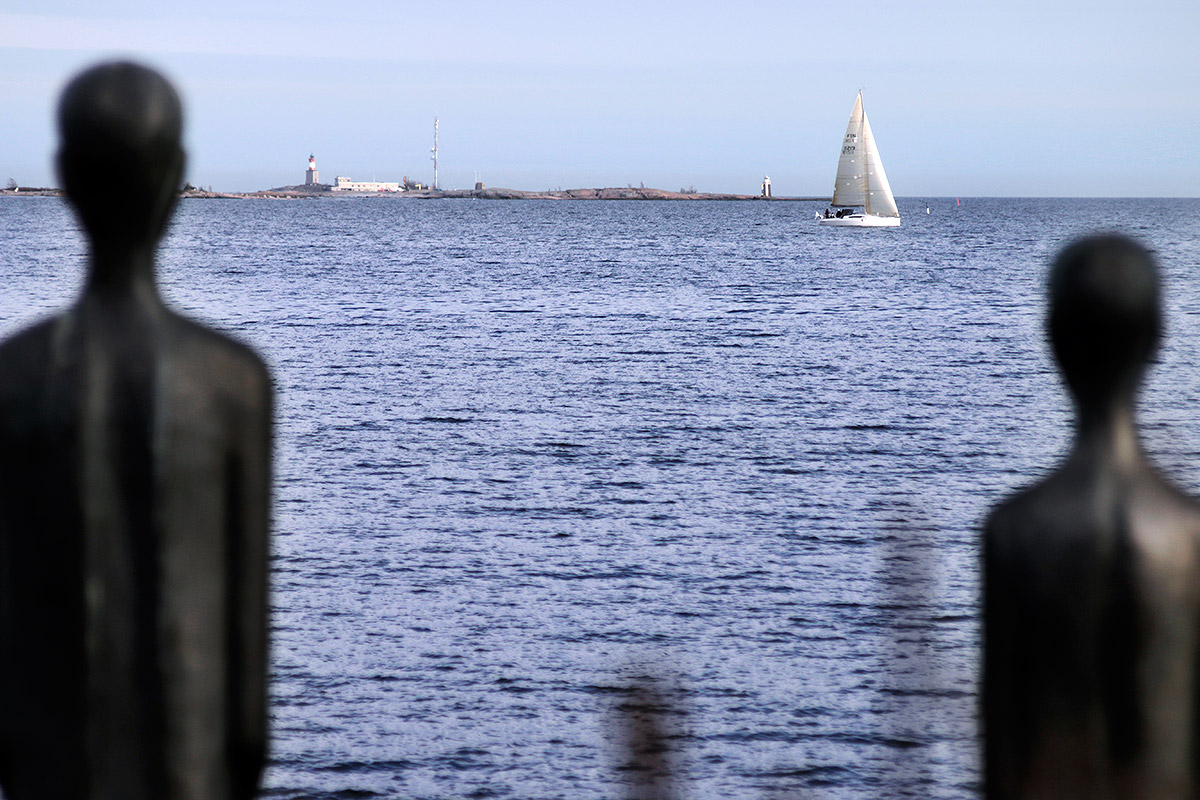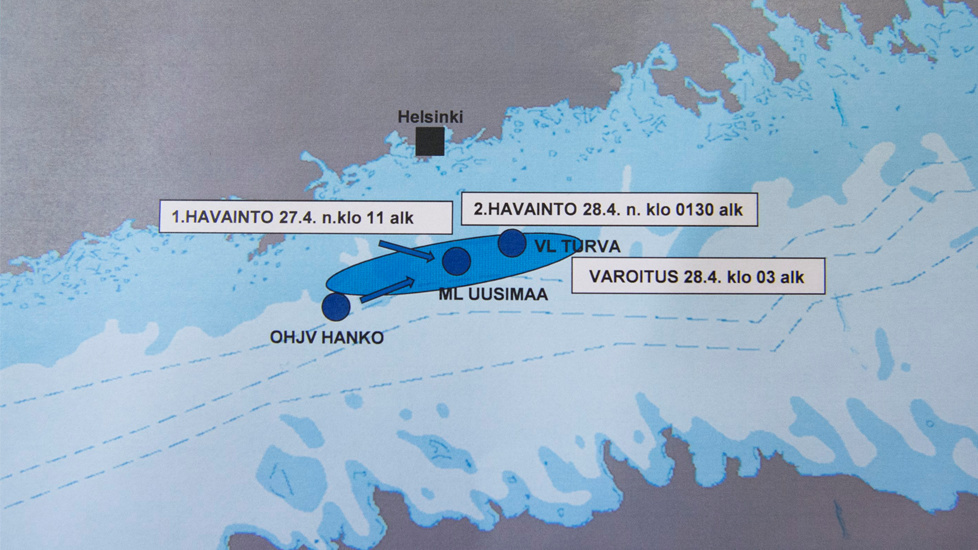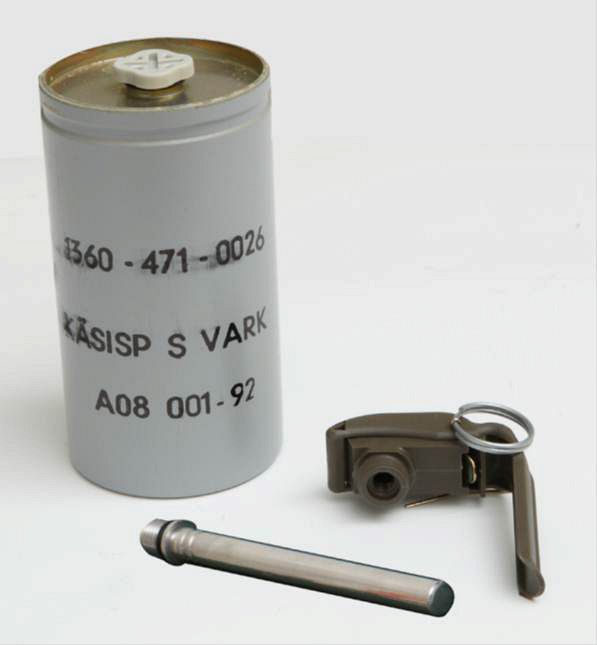
The boat traffic at the front of the Harmaja lighthouse in Helsinki was returning to normal on Tuesday April 28 2015 after the search operation for the underwater target was on the final stretch. Picture: Tony Öhberg for Finland Today
What happened?
The Finnish navy detected a possible underwater target based on sound observations after 11:00 on Monday morning April 27. The possible target was located within territorial waters, at the Helsinki shore. The Finnish navy conducted a search by surface vessels. A new detection was made in the search area early on Tuesday at 01:30.”Continuous observations were made during the span of 1.5 hours,” said Olavi Jantunen, the chief of operations in the Finnish navy.
How did the navy react?
On the basis of the detections, navy vessels fired handheld underwater depth charges as a warning at 3:00 in the morning between Monday and Tuesday. The search for underwater movement continued during Tuesday around the Helsinki shore, among other places, near the Harmaja lighthouse.

The border guard’s patrol vessel ‘Turva’ joined the search operation. Picture: The Finnish border guard
What exactly is the depth charge?
A depth charge is a grenade of the size of a half milk carton which is thrown from the vessel to the water. The bomb is timed to explode after a certain time of dropping it.
The charge of the bomb is so small that it won’t damage a submarine. The main purpose of the depth charge is to inform the target that it has been spotted.
What happened next?
After the dropping of the depth charges, the situation was calmed down, according to Haglund. Haglund said, it’s extremely rare to use depth charges. They were previously used in 2004.
What was lurking under the waters?
The unidentified underwater target could be anything from a submarine to an unmanned vessel. No one from the Finnish defence forces or at the ministry level has commented on the object’s origin, shape or form.
According to the Finnish navy chief Jantunen, it is certain that the specifics of the underwater target will be revealed in data analysis. The data analysis is based on a process “where we exclude targets of which could be related to the sound and observations,” Jantunen said. The data analysis could take anywhere from a few days to weeks.
What did the international news report?
The news of the incident spread quickly around the world. For example, the Russian media has published various news from the scenario with various versions of the truth. The Russian government owned Sputnik published an article with a headline “Finland ‘Bombs’ Mysterious Underwater Object Near Capital”. Rossijskaja Gazeta, a government daily, accused Haglund of saying that the target was a Russian submarine. Within the same breath, the paper describes Haglund as a “scandal minister”. The incident was also linked to the week-long unsuccessful “submarine hunt” in Sweden last October. Also, the closening of the military ties between Finland and Sweden received some attention and, for example, the Wall Street Journal reported that “the unconfirmed intrusion came at a time when the Baltic Sea region has seen a spate of airspace and maritime incidents that have coincided with a rise in tensions between Russia and the West.”
Additional sources: The Finnish navy, the Finnish defence forces












